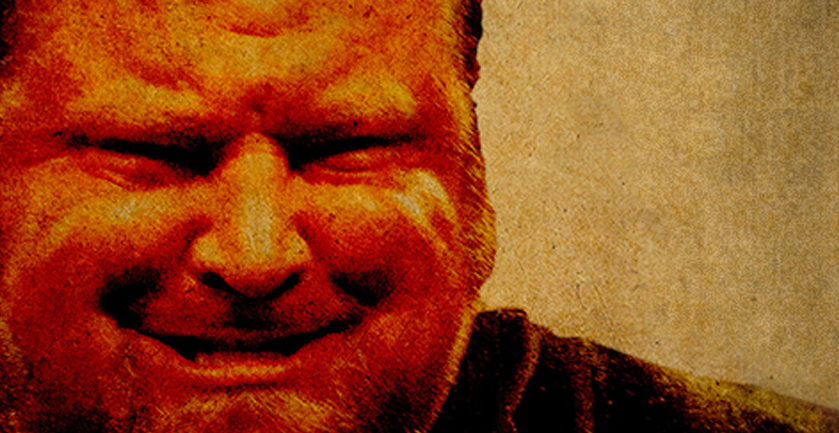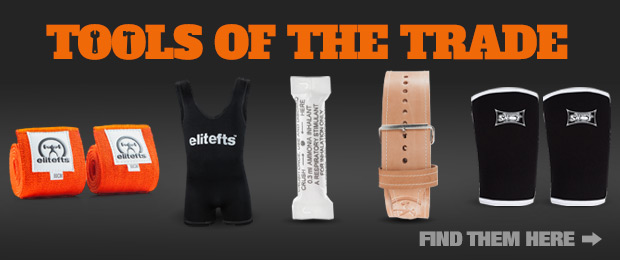
The idea for an upper back article has been rolling around my head for a while now, but after judging a competition last week, I knew I needed to get on it.
It seems that lifters do not really understand the importance of the upper back or how to actually use it in the three main lifts. The vast majority of the lifters competing last weekend and just about every client I have worked with lately are proof of this. We often hear talk about how important the posterior chain is, but I continue to see too many lifters that are weak in theirs.
RECENT: Common Strength Pitfalls to Avoid
Let’s start with what muscles make up the upper back. There are the trapezius (upper, middle, and lower), latissimus dorsi, rear deltoids, serratus anterior, and the rhomboids (major and minor). Yes, there are other muscles that are considered upper back, and the serratus anterior is considered an anterior muscle by some (hence the name), but for what I am going to be writing about, these are the main and most important muscles.
I’m pretty sure most lifters know what the upper traps are because they are rarely weak in this area, and they are muscles you can see in the mirror. Fewer people have developed and strong rear delts, but I still see this at a lesser frequency.
Where most lifters are lacking are in the rhomboids, serratus anterior, and middle to lower traps. I often see lifters with big, thick traps and decent rear delts who are convinced they have good, strong upper backs but between their shoulder blades is severely lacking. These lifters have little control of their scapula and often have issues with scapular winging as well.
Yes, they get away with so-called heavy upper back work. The problem is that instead of working the right muscles, they cheat the movement, allowing other muscles to take over. Their middle back weakness is truly apparent when doing the main lifts anytime they get heavy.
Once I get lifters with these issues doing the movements correctly, they are usually pissed with how light of a weight they have to use. In these cases, their upper back muscles have been badly neglected and got very weak.
When it comes to the three powerlifting lifts, there are two main jobs the upper back performs. These would be scapular depression and retraction.From my observations, a lot of lifters understand what scapular retraction is, but they are still excessively weak in this area while having poor control.
For those of you who do not know, scapular retraction is simply squeezing the shoulder blades together. It is as if you’re trying to grip a quarter in the middle of your back with your shoulder blades. The real key to this is to not move them up (elevate) or down (depression); just together. This retraction is mainly performed by the rhomboids, middle traps, and some lats.
The vast majority of lifters I see who do actually retract their scapula also elevate them while retracting. This is a huge mistake that interferes with having a quality brace and technique. It actually puts the body in a much weaker position to perform all the three main lifts. Retraction is good, but it must be in conjunction with scapular depression. The main movers to depression the scapula are the lats, serratus, lower traps, and even the pecs (major and minor). The serratus anterior is also essential to stopping the scapula from winging, which is something we want to avoid.
RELATED: Top-5 Exercises to Keep Your Spine Healthy
So, why should you depress and retract your shoulder blades for the squat? First off, anytime your upper back rounds, your whole body is going naturally follow it, and this will make you end up forward in the squat, essentially making it heavier. This also puts you at a much greater chance of injury.
Depression and retraction will put your upper back in a better anatomical position to hold strong and straight (neutral). It also makes for a much better and stronger shelf to hold huge squats. Depression and retraction will give you an open chest, whereas elevating tends to roll your shoulders anterior, which gives you a small chest.
One of my favorite reasons for depression is that you must pull your lats very hard downward. This, in essence, stacks your vertebrae (when in a neutral position) and keeps them very tight. Think of your vertebrae as blocks and the disc as a chunk of rubber in between the blocks. This stack is very unstable and can tip very easily, but if you were to put a super tight rubber band around them when they are stacked straight, they become much more stable, to the point you can even lean the stack without it falling apart.
The lats are a massive muscle that can help stabilize the vertebrae and strengthen the upper back from rounding, so why not use them? By the way, this stacking of the vertebrae and tightening the lats is part of a full brace. This simple movement of depression and retraction will help increase your squat a lot once mastered.
The same thing I see so many lifters do in the squat they also do while performing the bench press. Yes, they retract but also elevate instead of depress. This often creates shoulder issues that originate from the bicep tendons being irritated. Depressing and retracting the shoulder blades in the bench gives you a much stronger base to push from and helps keep all force moving in one direction up. It also helps keep your shoulders healthy.
There is a little catch to the retraction part of this, though. Being fully retracted at the lockout of the lift can make it harder to lock the triceps and to get the pecs to help with the lockout. I prefer to be fully locked down and back from the start, and as I am past the halfway point on the press, I will loosen my retraction some. Now, I never let depression relax, and I do not let my scapula protract past neutral. In other words, I am still squeezing them with my rhomboids but not as hard, and I do not let my shoulder come forward or upward.
Things do change a bit in the deadlift. The focus is more on depression for the same reasons as the squat, but also because this makes the arms longer and the pull shorter. The retraction becomes more of a neutral shoulder position, and the upper back muscles are squeezed hard to maintain that position. Scapular depression and neutral retraction help to utilize the upper back muscles to stop the thoracic vertebrae from rounding too far into kyphosis.
Depression and retraction seem easy enough, but trust me, this takes time to master. First off, it takes practice to redevelop solid control of your scapula. I say redevelop because we develop as babies with proper movement patterns. We mess them all up as adults mostly due to lack of knowledge, laziness, and injuries.
WATCH: Back Training with Justin Harris
Second, it takes time and intelligent training to develop the strength back in these muscles that have been neglected for so many years. Not only must they become strong enough to hold position with maximal loads, but they also must be able to hold that position throughout the whole duration of a max lift or reps. Control and strength do not happen overnight, no matter how badly we wish they would.
Another big area where many lifters fail is when they are actually trying to get depression and retraction. At the competition, when I saw lifters trying to use their upper backs, it was already too late. They would pick up the squat and walk it out or unrack the bench, then try to get set up but it was too late. At that point with near maximal weights, they cannot set their upper backs to the full potential because they cannot get all the way in position.
The second your hands touch the bar, the lift is started in my mind. I get in the correct position before I even lift the bar up.
In the squat, my shoulders are down and my scaps are retracted while I am forcing myself under the bar. I hold this until the lift is over.
In the bench, my scaps are down and retracted before I even grab the bar. Again, they are there until the lift is over. In-between reps, I do not relax them. The closer to perfect you start, the closer to perfect the lift will be by the time you perform and finish it.
Depression and retraction should be thought about with every upper back exercise you do. In fact, when I start with clients that have severe weaknesses in this area, I have them depress and retract first and then perform the lift holding that. I like to do this with lat pulls, rows, banded pull-aparts, military presses, rear delt flyes, etc.
Once the strength and the ability to hold this position improve, then we can begin working on the correct movement patterns of the shoulder blades. I just found this to be the fastest way to build strength and control in this area of the upper back.
One final note: You are not depressing and retracting if you’re chest-breathing or if your traps are shrugged up. Learn to control your shoulder blades, strengthen the middle and upper back, utilize the massive muscle of the upper back, and you will unlock hidden strength your body has been waiting for you to discover.











Excellent question. That is the natural or correct movement pattern, however I do not feel with maximal weight I would be able to get my scapular fully retracted at the bottom if I do not start locked in. On the concentric phase I will let them move naturally though. So on lighter weights with reps I do let them move more natural with retraction.
Chad